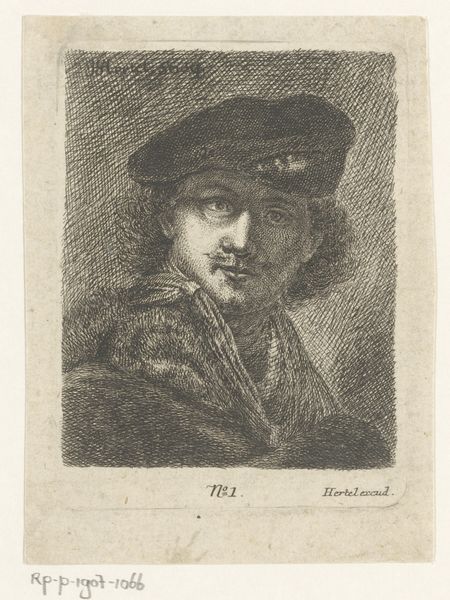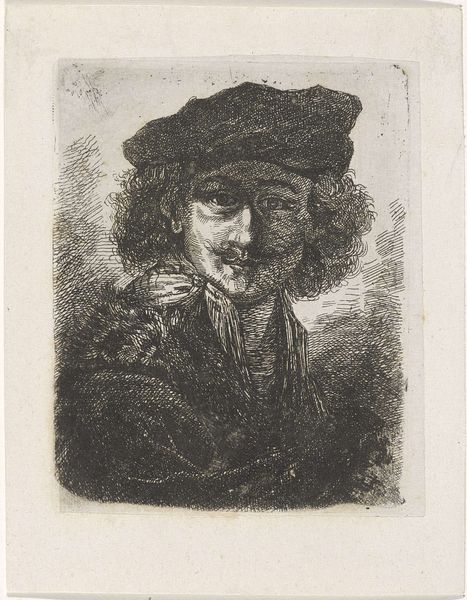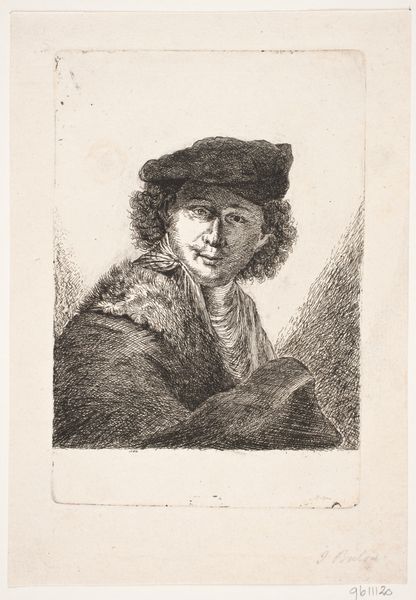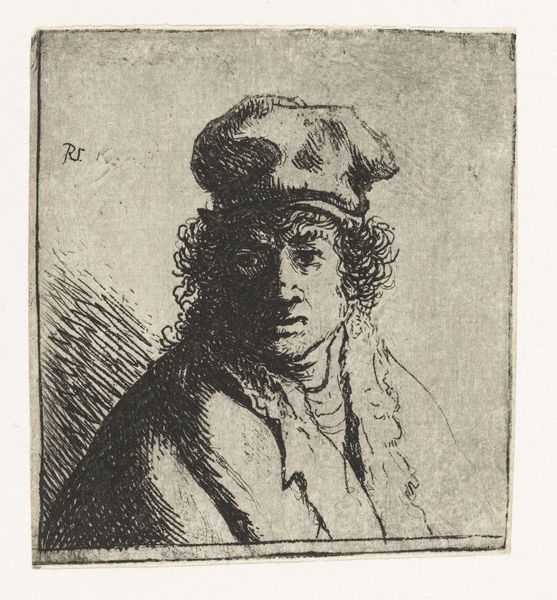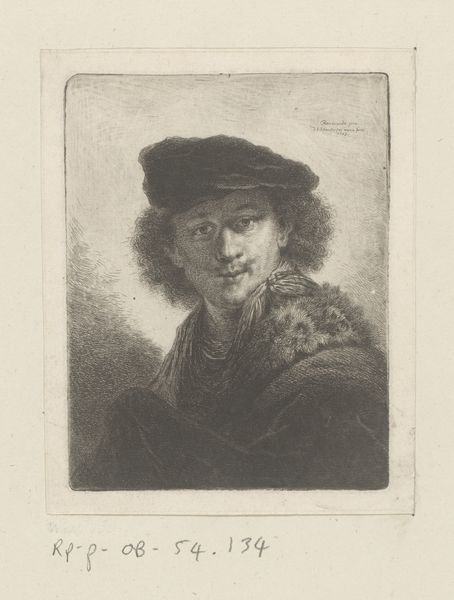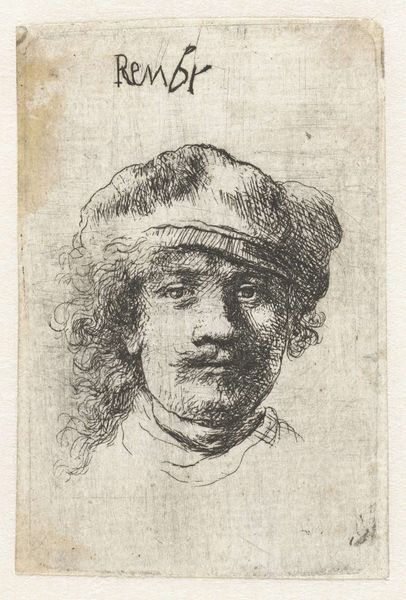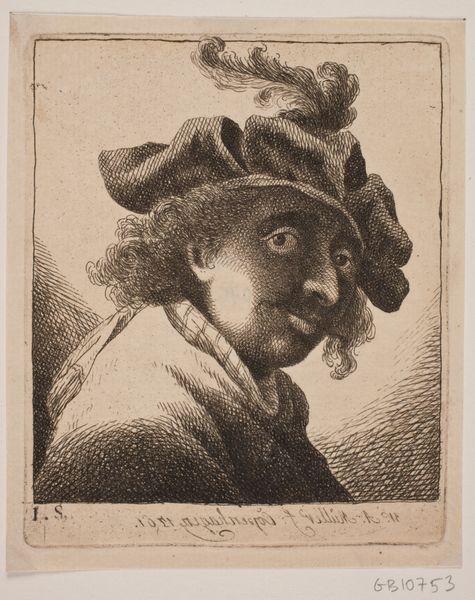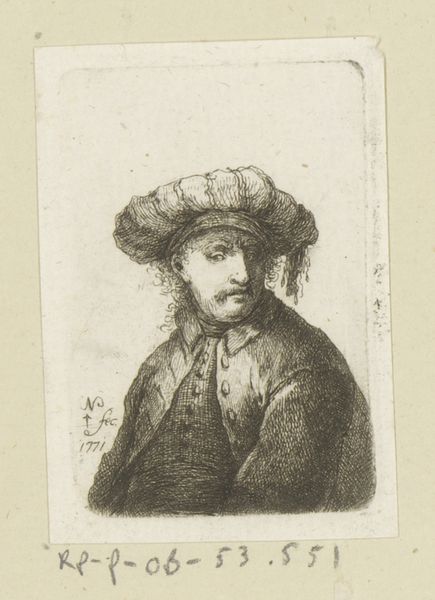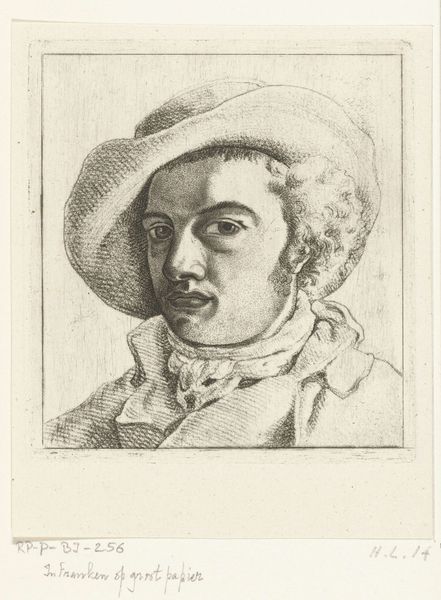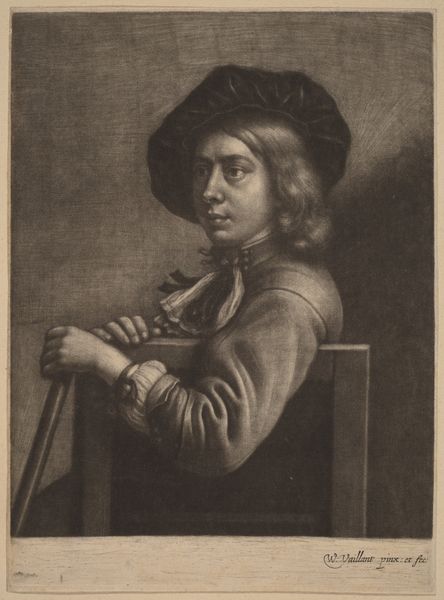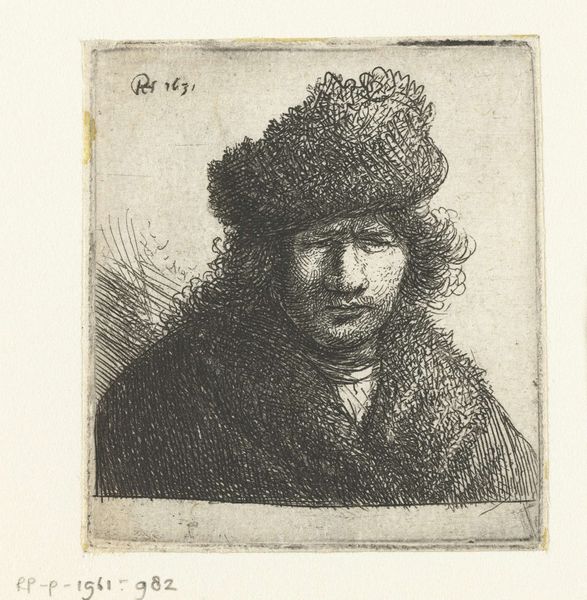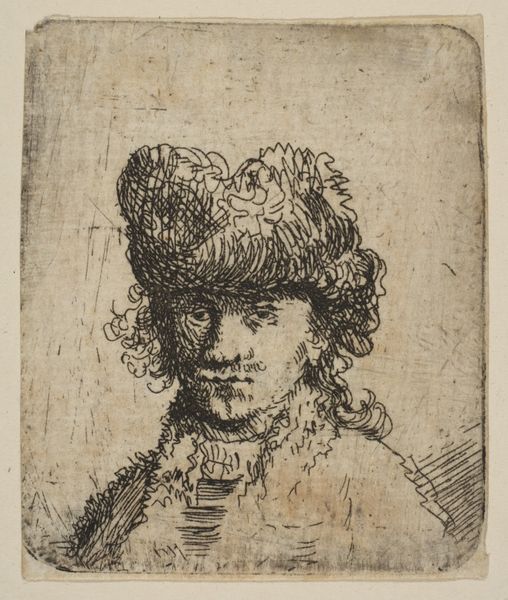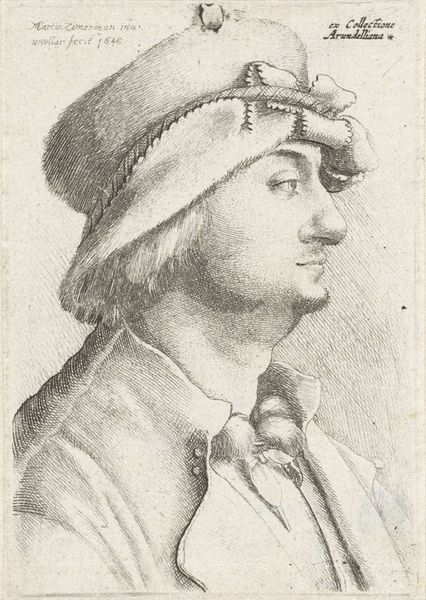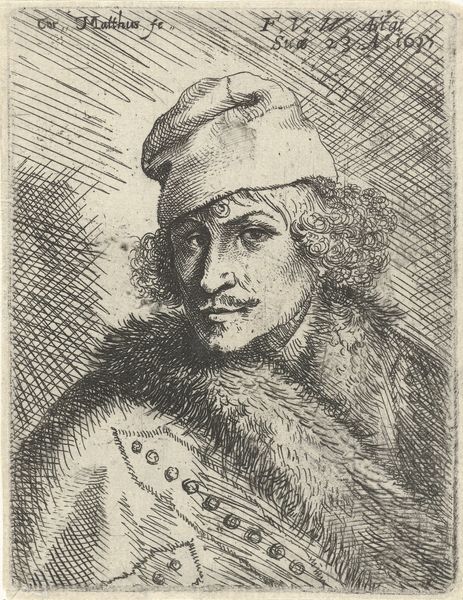
Dimensions: 100 mm (height) x 82 mm (width) (plademaal)
Curator: This is an etching, "Rembrandts selvportræt," a self-portrait by Rembrandt van Rijn, made around 1780. It is currently held at the SMK, the National Gallery of Denmark. Editor: My first impression is the incredible intensity of the gaze. Despite the rather modest scale of the print, it feels incredibly intimate and probing. The details within the etching creates almost tangible textures, and the lines making up the face create strong shadowing that make it pop out of the stark background. Curator: Yes, there's a compelling, somewhat melancholic presence, isn’t there? Consider the visual language. The way he employs hatching and cross-hatching to build up these tonal contrasts gives so much emotion to the portrait. It calls to mind ideas of his own personal reflections about being in his 70s and a self reflection of self as a historical memory. Editor: The way he situates himself—wrapped in what appears to be luxurious furs, almost theatrically posed—speaks to broader societal contexts, perhaps, commenting on the shifting roles of artists and the development of their individual identities within a developing capitalist, celebrity-driven society of that time? Even then, social positions and performances of the self were being meticulously crafted and communicated to audiences in ways that feel oddly contemporary. Curator: Precisely, an artist controlling and shaping his own image. The hat is a convention he repeats—it symbolizes the artist, a marker of selfhood, of the artist as an intellectual but in this case in more somber hues of blacks, whites and greys that perhaps denote someone a bit wiser. It emphasizes the cultural continuity of symbols, adapted and reinterpreted across different historical moments. Even in 1780! Editor: I am drawn to how we still continue to recycle art themes even up to this time period. I would also add that an etching from 1780—what does it mean to keep reproducing a 17th century artists portrait? I'd argue it speaks to art canon formation, the solidification of artistic genius, and how power structures embed themselves even in visual representation. Curator: It also invites further reflections. Even centuries later, its immediacy persists. Editor: Agreed. This intense immediacy encourages us to re-evaluate and connect to ourselves.
Comments
No comments
Be the first to comment and join the conversation on the ultimate creative platform.
